Ancient Psychedelia: Alien Gods & Mushroom Goddesses
Online Book - Chapter 1, Page 15
Back to Online Book Mainpage / Next Page (Chapter 1, Page 16)
| The serpent is used to occult the mushroom. But the serpent is not the only symbol used to occult the mushroom. The bird is another animal symbol used to occult the mushroom. The bull and cow we will find, are used to represent the mushroom as well as the deer; sometimes the pig or boar, and even the groundhog and toad. Small greenstone axes that were not known to have been used for cutting, are found in several countries including Greece, Bulgaria, Yugoslavia and southeastern Italy. Axes are found in shrines and buried in graves as sacred objects from the 7th to the 5th millennium BC. Some of the early axes were made of clay, which could have been of no use for cutting or anything similar to it. These have turned up in the Sesklo culture at Achilleion II and III (6300-6100 BC) found alongside bird goddess figurines and pottery vessels. (Note the name “Ach,” as in “axe.”) (42) Bone figurines from Bulgaria, c. 4000-5000 BC, present a goddess figure with no distinctive facial features, only a mushroom shaped head (9a). Hittite goddess figurines made of stone, from Alaca höyük, Turkey, c. 2200 BC, have very distinctive mushroom shaped heads (9b), while others made from metal, c. 3000-2000 BC exhibit similar mushroom shaped heads (11f). Terracotta goddess figurines from Moldova, c. 3000-2000 BC (L: 9c), look similar to Syrian goddess figurines from the same approximate era (R: 9c). The area of Lunigiana, Italy has turned up some distinctive mushroom headed stone figures, c. 3300-2300 BC (9d).   (9a) Bone Figurine. Bulgaria c. 5000-4000 BC 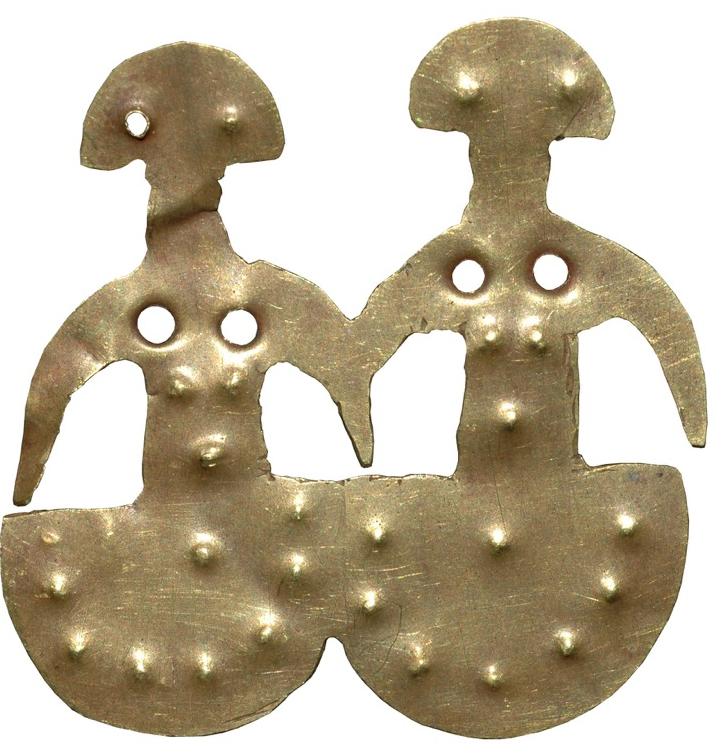 (11f) Alaca hoyuk c. 3000-2000 BC |
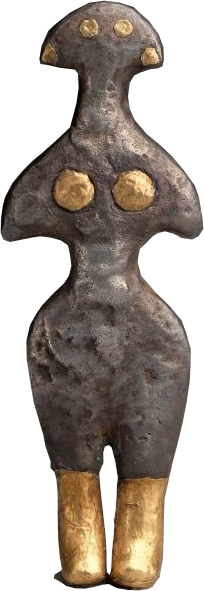 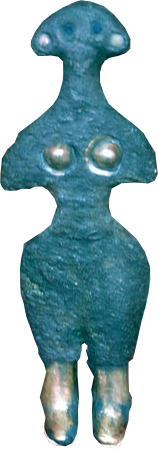 (9b) Hittite, Alaca höyük, Turkey c. 2200 BC L: (9c) Moldova. 3000-2000 BC   R: (9c) Syria 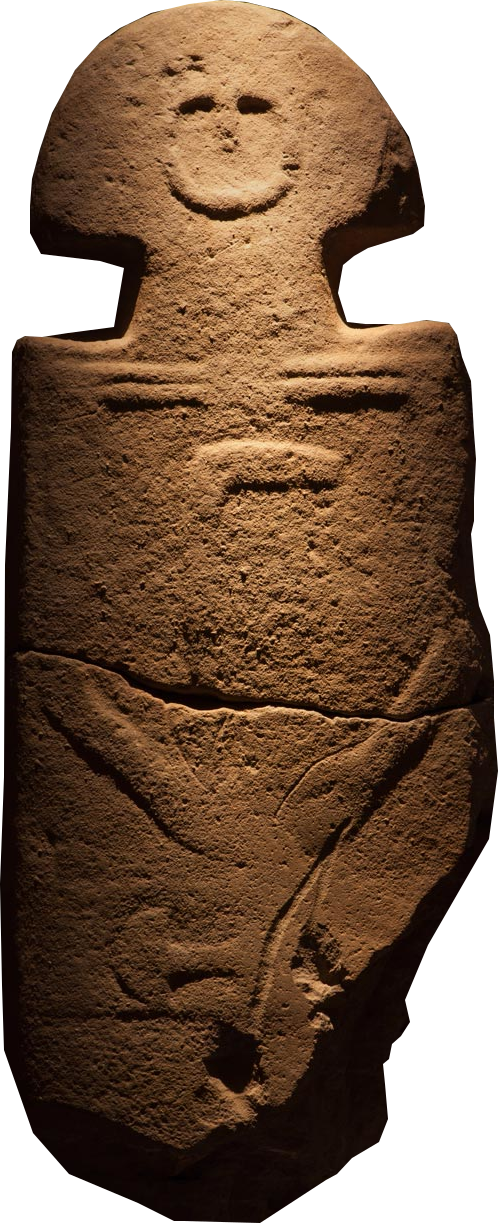 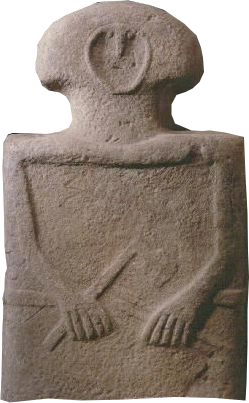 (9d) Lunigiana, Italy. c. 3300-2300 BC (42) The Language of the Goddess, p.290; M. Gimbutas, Achilleion: A Neolithic Settlement in Thessaly, Greece, 6400-5600 BC. (with Shan Winn, Daniel Shimabuku et al., contributors). Monymenta Archeologica 14. Los Angeles: Institutre of Archaeology, University of California, 1989 |
Go Back to Page 14